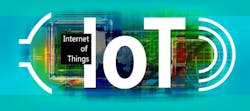The Internet of Medical Things: Monitoring and improving performance
The Internet of Things has been moving into healthcare for several years in the form of remote patient monitoring devices. Unlike the devices used by many consumers, which monitor things like heart rate and activity of healthy individuals, the Internet of Medical Things has focused more on people with chronic illnesses that need more intense monitoring to help them avoid complications or crises.
Though there has been interest from consumers in transferring data from their activity trackers to the medical record, this isn’t really useful. The problem lies in the capability to analyze, use, and integrate the data. Your primary care physician doesn’t need raw data from your activity monitor. What your physician needs is a general summary of how active you are, which you can give to him or her verbally. Loading a bunch of activity data into your medical record doesn’t add insight or help your physician better understand your physical condition. So consumer devices, while useful to many individuals, don’t provide the kind of data that is really useful in a medical setting.
But there are several new initiatives to use remote biometric monitoring to help healthy, athletic people improve their performance.
A rather interesting project is underway at a medical center that specializes in athletic performance to analyze athlete’s sweat in real time to determine hydration and electrolyte levels. Though sweat analysis has been done in the lab for several years, remotely connected sensors offer the capability to analyze sweat while the athlete is still in the game.
Hydration is a critical issue in sports performance. Even mild dehydration can impair physical performance. Back in the 1999 Women’s World Cup soccer series, the Norwegian team lost to the United States on a hot, humid afternoon, and commentators noted that the Norwegian women, who were playing well below their usual standard, weren’t drinking much water. The U.S. team won the gold, helped out by proper hydration.
Across the South, the first weeks of high school football practice have historically been a danger zone for the players, with deaths from heat stroke not uncommon, often exacerbated by lack of adequate hydration. On the other end of the spectrum, there have been instances of marathoners and other endurance athletes dying of hyponatraemia, a condition in which over-intake of water dilutes electrolytes.
Sweat analysis in the lab can be useful, but its value goes up dramatically if you can provide the data in real time. This would allow athletes to fine-tune water and electrolyte intake to maximize their performance.
In the world of automotive racing, remote biometric sensors are being used to monitor drivers’ heart rate, temperature, blood pressure, and other indicators as well as the g-forces they experience under acceleration and to monitor their reaction times. For race drivers, their physical state influences things like reaction times and judgment, which can greatly affect their performance. The data helps race teams design more effective training programs and could even alert a team if a driver is impaired (by heat, stress, or other factors) enough to pose an increased crash risk.
VIDEO: See how NTT DATA is taking advanced technology and analytics in IndyCar racing and applying them to solve today’s healthcare needs.
For individual consumers, the data from smartwatches and activity trackers, while not useful in a medical record, can help them track variations in activity and design life routines that help them improve their health. With the analytics provided with these devices, consumers can get a realistic look at how much they are actually moving during the day and how much they are sitting. Many devices include an alert if you sit too long, which could be a good reminder to get out of the chair more often. While the data may not be useful in a medical setting, it can give a reality check to those of us who tend to remember more activity than actually occurred and give us a baseline with which to measure progress.
For chronic disease patients, on the other hand, certain kinds of data can be very useful, especially if the right data is integrated at the right point of care and if there is an easy path for communication between the patient and the care team. Routine, everything-stable data is less important than data that shows a change.
For example, for congestive heart failure patients, a sudden rise in weight can mean the patient is retaining fluids, which indicates a worsening condition. Often, it means the patient has forgotten to take medications or needs a different dose. So a scale that is connected to the internet and can send an alert to a physician’s office when a rise in weight is recorded can be very valuable. This early warning allows a member of the care team to contact the patient, assess the problem, and make any needed modifications in treatment. Often, the early warning can keep the patient healthier and out of the hospital.
As with most data in the world, knowing what is relevant and how to use it is critical. Data is only valuable if it provides an actionable insight.



